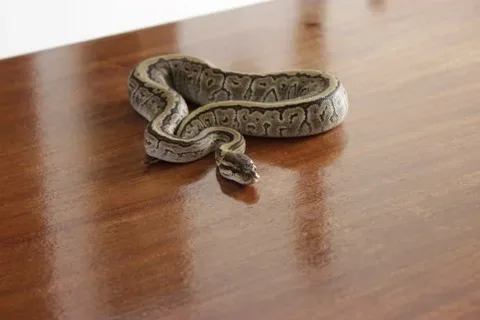When people think about buying a pet snake, they often focus on the price tag of the animal itself. While that number matters, it’s only part of the picture. A healthy, affordable snake doesn’t mean it’s “cheap” in a negative sense—it just means you’re making a smart choice within your budget. What truly matters is the long-term health of the snake and how well it fits your lifestyle.
For example, a corn snake may cost much less than a rare python, but that doesn’t make it a lesser pet. In fact, corn snakes are hardy, easy to handle, and live long lives when cared for properly. Affordability, in this case, is about choosing a species that aligns with both your wallet and your ability to provide a safe, stable environment.
Choosing Species That Fit Your Budget
One of the first steps in finding the right snake is deciding which species makes sense financially and practically. Not all snakes require the same level of care, and some species come with higher upfront or ongoing costs. Beginners often do well with species that are hardy and don’t demand elaborate enclosures.
Affordable options like ball pythons, king snakes, or corn snakes are popular because they balance cost, temperament, and care needs. They may not carry the same prestige as exotic or rare breeds, but they’re excellent companions for new and experienced owners alike. Remember, choosing within your budget doesn’t mean you’re sacrificing quality—it means you’re setting yourself and your pet up for long-term success.
Recognizing Quality Beyond the Price Tag
When shopping for a snake, it’s important to look past the initial cost and pay attention to signs of health and responsible breeding. A low-quality snake can end up costing you more in the long run if it comes with hidden health issues. Bright, clear eyes, smooth scales, regular feeding habits, and alert movement are all signs of a healthy snake.
This is why buying from a trusted source matters. For instance, a site like Snakes at Sunset offers a wide selection of snakes that are both affordable and carefully bred. Reputable sellers ensure their animals are well cared for before they reach a new home, so you’re not just paying for the snake—you’re paying for peace of mind that your pet has had a strong start in life.
Factoring in Hidden Expenses
Even if you find a great deal on the snake itself, you’ll want to consider the costs of proper housing, heating, and feeding. These aren’t hidden in the sense of being a surprise, but they’re often overlooked when people focus only on the purchase price. The enclosure, substrate, temperature control, and regular meals are essential parts of keeping your snake healthy and happy.
That doesn’t mean you need to overspend. Many snake owners find creative and budget-friendly ways to set up enclosures without compromising safety or comfort. Doing a little research, asking other snake owners for tips, and sticking to essentials will help you balance affordability with responsible care. In the end, the real value of your pet comes from how well it thrives in your care, not just what you paid at the start.
Building Trust with the Seller
One of the most overlooked aspects of buying a snake is the relationship you build with the seller. A trustworthy breeder or shop doesn’t just hand you a snake and take your money—they guide you through the process, answer questions, and provide insight into the animal’s background. That kind of support is invaluable, especially for first-time owners.
Before making a purchase, take the time to read reviews, ask questions, and see how transparent the seller is about their snakes’ care and history. Sellers who are willing to share feeding schedules, shedding patterns, and health records are more likely to provide snakes that are worth your investment. In this way, affordability isn’t about cutting corners; it’s about making informed choices with the help of people who care about their animals.
Conclusion
Finding the right snake for your budget doesn’t mean settling for less. Affordable snakes can be just as healthy, beautiful, and rewarding as more expensive species. The key is knowing what to look for: choosing the right species, recognizing signs of quality, preparing for care costs, and buying from a reputable seller.
When done thoughtfully, buying a snake is not about chasing the lowest price—it’s about investing in a companion you can care for responsibly over the long term. By balancing cost with quality, you’ll discover that affordability and excellence can go hand in hand, making the experience of owning a snake both accessible and deeply rewarding.


